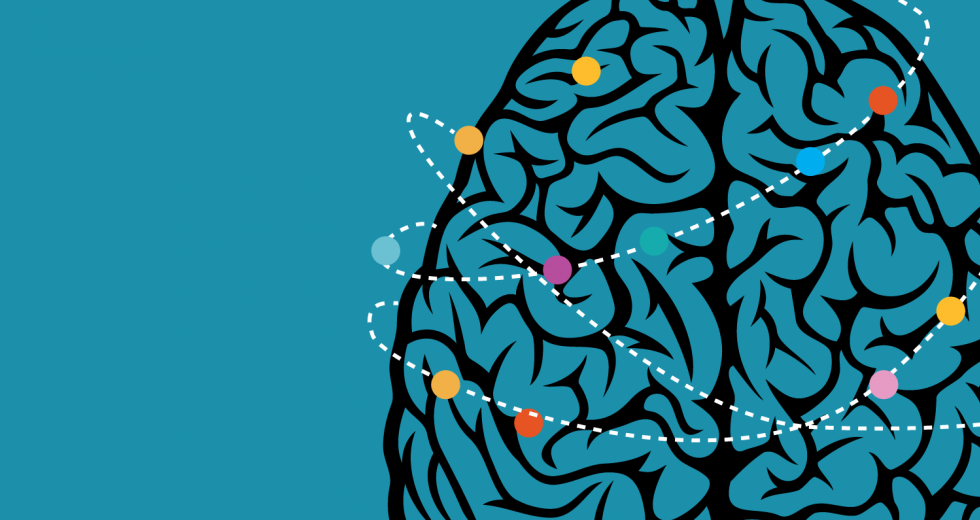Alzheimer’s, the most common memory disorder, affects one out of nine people over 65, and with the largest generation in history now reaching its final quarter of life, the numbers will only swell. By 2050, the disease is expected to affect nearly 16 million Americans with direct costs of more than $1 trillion. As baby boomers get older, these predictions from the Alzheimer’s Association, a global health organization, point to a costly and concerning future. But this future could be altered with a medical breakthrough that prevents, slows or stops the disease. At this moment, researchers and scientists worldwide are trying to make that happen sooner rather than later.
Recent advances in imaging techniques have allowed neurologists to scan the brain for clues of where and how the disease begins. In the past, doctors had to wait for an autopsy to examine brain cells. Now, with better technology, neurologists can track markers over time in living patients.
According to Dr. Charles DeCarli, director of UC Davis Alzheimer’s Disease Center, finding the catalyst (or catalysts) could help researchers determine ways to stop Alzheimer’s disease before it even starts. “One of the things we’re pretty sure of right now is that the earlier we intervene, the more likely we are to prevent dementia,” he says.
Pet Projects
Looking for the culprit for Alzheimer’s disease, many scientists have zeroed in on plaques found between the brain’s nerve cells. These plaques contain deposits of a toxic protein fragment called beta-amyloid.
“We’ve discovered that there are people walking around with this abnormal protein in their brain for years and years before symptoms begin,” DeCarli says. “That’s interesting in the sense that we might be able to get to this early, before there’s any brain injury.”
This protein is not a new discovery. Nearly a century ago, Dr. Alois Alzheimer correlated these plaques with the decline of cognitive abilities. Still, nobody’s 100 percent certain whether plaques are the cause of the disease, a by-product or something else entirely, DeCarli says.
The best way to find out is through tests. That’s the point of the Anti-Amyloid Treatment in Asymptomatic Alzheimer’s study (the A4 study), a clinical trial that started in 2014 at more than 60 sites throughout the U.S. and in Canada and Australia. Participants ages 65 to 85 who may be at risk for Alzheimer’s disease are either given a placebo or a drug that may reduce amyloid.
Related: Alzheimer’s By the Numbers
“The hope is that after four or five years, the people who get treated continue to do well, whereas people who don’t get treated show decline,” DeCarli says. UC Davis is one of California’s eight test sites.
To be eligible, participants must have had normal thinking and memory function plus elevated levels of amyloid plaque buildup. To check for amyloid, physicians and researchers used positron emission tomography scans. In these minimally invasive diagnostic imaging tests, an injected radioactive tracer travels to particular parts of the body so doctors can see how organs and tissues are working.
PET scans have become prevalent in recent years, but not without controversy. One sticking point is who should pay for them. In 2013, Centers for Medicare and Medicaid Services decided PET scans for amyloid should not be covered under the Social Security Act. There was no solid evidence to conclude that these scans would be beneficial for diagnosing or treating patients with dementia or neurodegenerative disease, according to the federal agency. However, certain clinical trials are an exception, including studies focused on better treatments or prevention strategies for Alzheimer’s disease.
The Eyes Have It
At NeuroVision, a Sacramento-based digital imaging company, CEO Steven Verdooner believes PET scans will play an important role, but at a later stage in the disease. His local company instead uses an optical imaging system to look for the same amyloid plaque in a different area: the eyes. “The plaque that builds up in the brain also builds up in the retina,” he says.
This retina scan, he says, works like a routine eye exam. Days prior, a patient must ingest curcumin, a substance found in turmeric, to mark the amyloid. Under a laser, plaque buildup in the patient’s retina appears fluorescent and can then be tracked over time.
Using this method, NeuroVision recently completed a study on 200 patients in an Australian clinical trial. The results showed good correlation with PET. However, Verdooner says the study also revealed a large discordant group that are positive in the retina but negative with PET.
“This could be for several reasons, but in the retina we are looking at plaques that are about 20 microns in size and in PET we view in millimeters,” he says. “So our theoretical sensitivity is much better than PET.”
Verdooner says measuring the trajectory of the disease — plaque accumulation over time — will be key, so the right measuring tool is critical. “The PET scans use an invasive radioactive probe, so that’s not something you want to do all the time,” he says. “Since our test is noninvasive, it can be performed repeatedly to see if a patient is getting worse or responding to a drug.”
Brain Traffic Control
Beyond the Capital Region, researchers at other institutions also are looking into methods to detect Alzheimer’s disease in its early stages. Boosting to the brain’s own immune system could be a potential way to prevent or cure the disease, according to a new report out of Stanford University. Researchers there found that certain cells (microglia) meant to clear bacteria and viruses from the brain stop working as people age.
Dr. Katrin Andreasson, professor of neurology and neurological sciences at Stanford University School of Medicine and the study’s senior author, calls microglia “the brain’s beat cops.” They make up about 10 to 15 percent of cells in the brain, on guard and poised to destroy invaders, including amyloid plaques.
“The microglia are supposed to be, from the get-go, constantly clearing amyloid-beta, as well as keeping a lid on inflammation,” Andreasson said in a press release. “If they lose their ability to function, things get out of control. A-beta builds up in the brain, inducing toxic inflammation.”
The study notes that in older people, a single protein called EP2 prevents microglia from doing their clean-up job, and nerve cells become vulnerable and die. But in experiments with mice, blocking EP2 reversed memory loss and other features similar to Alzheimer’s disease. Now, Stanford researchers are creating a compound to block EP2 in human brains with the hope of reproducing the results found in the mice experiments.
At the UCSF Memory and Aging Center, researchers are focusing on a different marker. Instead of amyloid, the clinical trials have been targeting a protein called tau. In healthy brains, tau stabilizes microtubules in nerve cells. But when tau proteins become defective, they get twisted up in the cell’s transport system. These tangles prevent nutrients and other supplies from getting where they need to go and cause neurons to die.
Unlike amyloid plaques, which build up years before Alzheimer’s symptoms appear, abnormal tau proteins accumulate when a person has symptoms, according to Dr. Adam Boxer, a neurologist at the UCSF Memory and Aging Center. In other disorders, Boxer says tau has been found in absence of other toxic proteins, so the center is testing various drugs to see if stabilizing tau could stall the progression of Alzheimer’s in patients in the early stages.
“We think the tau is probably one of the best targets for Alzheimer’s therapy and other neurodegenerative diseases,” Boxer says. “I don’t know if we’ll be able to reverse the disease. That seems a little less likely, but you never know.”
Recommended For You

Alzheimer’s by the Numbers
Stats on the devastating impact of the disease
The impacts of Alzheimer’s disease are taxing, both emotionally and economically, as shown in these stats from the Alzheimer’s Association’s 2014 Alzheimer’s Disease Facts and Figures.

Unnatural Selection
Scientists at UC Davis may be on the cusp of an HIV cure
The person who finds the cure for HIV will have their name etched in medical history. It’s a hard pill to swallow for one man who has spent 40 years chasing a cure. A cure for HIV, built upon decades of his work, could very well be proven this year. Yet Dr. Gerhard Bauer’s name may be little more than a footnote in the arcane medical journal that publishes the breakthrough.
This is the story of curing HIV.

Opportunity of a Lifetime
Fetal surgeons at UC Davis are repairing birth defects in babies — before their patients are even born
Too many pregnant mothers know the feeling of horror: The ultrasound reveals something wrong. Perhaps it’s nothing. But maybe it’s life-threatening, a disease or a disability. Maybe it’s the unthinkable. For hundreds of thousands of years, the unthinkable — babies doomed to die or develop impairments before drawing their first breath — meant only tragedy and heartache. Now there is hope.

Better With Age
Emerging trends offer senior living with style
Retirement communities are facing the challenges that come with catering to seniors in the 21st century. These consumers — and there are a lot of them — are demanding greater access to technology, life-long learning programs and attention to overall wellness.



